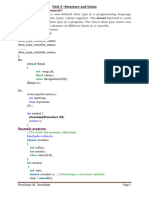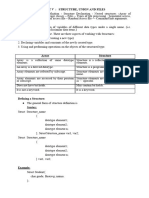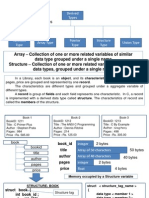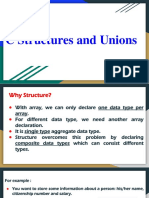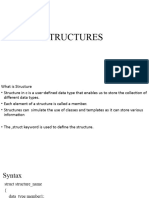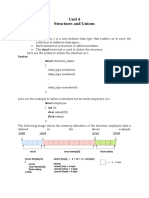0% found this document useful (0 votes)
4 views4 pagesStructure in C 4
A structure in C is a user-defined data type that groups variables of different types under a single name, useful for organizing complex data. Structures are declared using the 'struct' keyword, and members can be accessed using the dot operator or via pointers with the arrow operator. Unlike structures, unions share memory among their members, allowing only one value to be valid at a time.
Uploaded by
royrian149Copyright
© © All Rights Reserved
We take content rights seriously. If you suspect this is your content, claim it here.
Available Formats
Download as PDF, TXT or read online on Scribd
0% found this document useful (0 votes)
4 views4 pagesStructure in C 4
A structure in C is a user-defined data type that groups variables of different types under a single name, useful for organizing complex data. Structures are declared using the 'struct' keyword, and members can be accessed using the dot operator or via pointers with the arrow operator. Unlike structures, unions share memory among their members, allowing only one value to be valid at a time.
Uploaded by
royrian149Copyright
© © All Rights Reserved
We take content rights seriously. If you suspect this is your content, claim it here.
Available Formats
Download as PDF, TXT or read online on Scribd
/ 4







